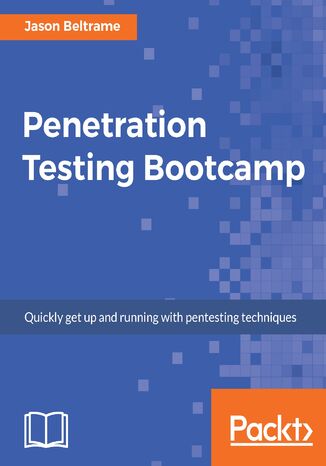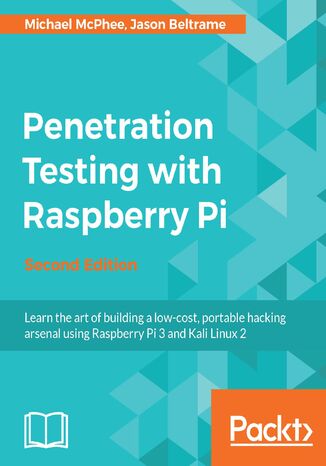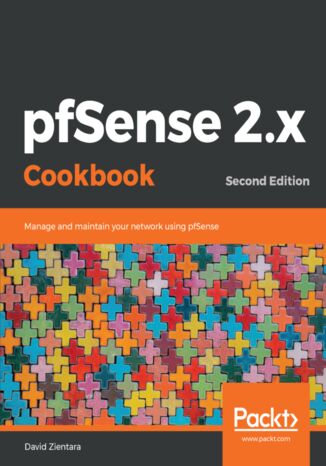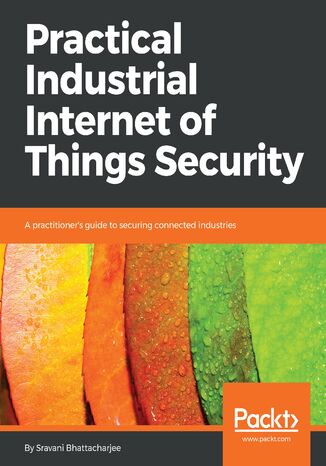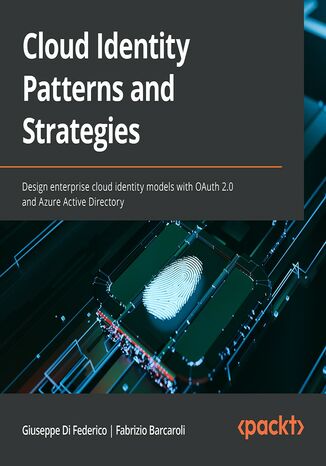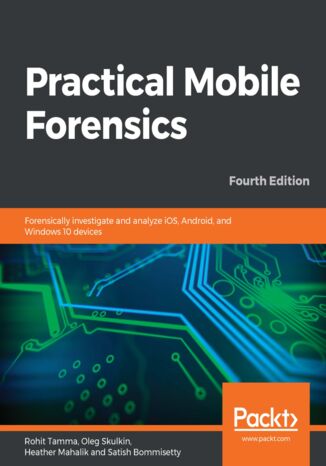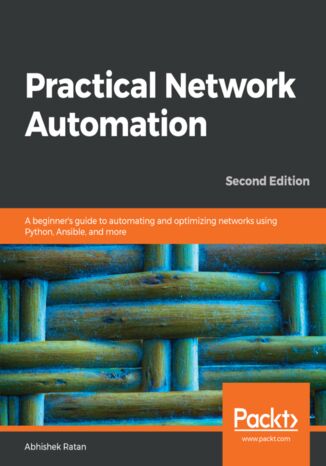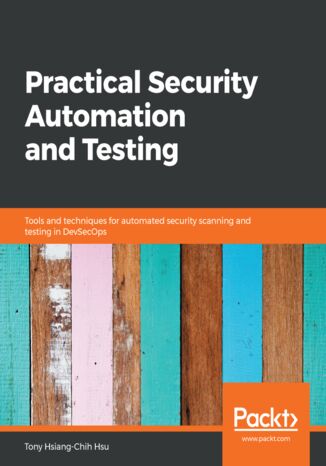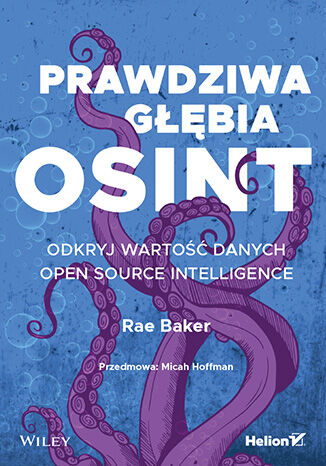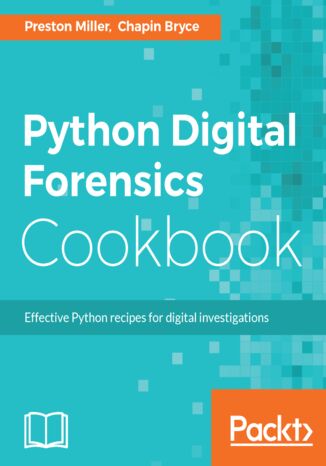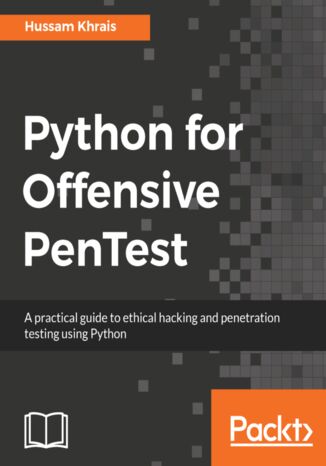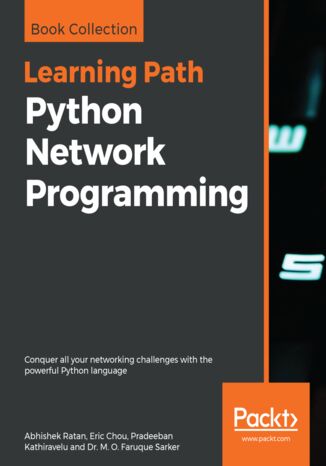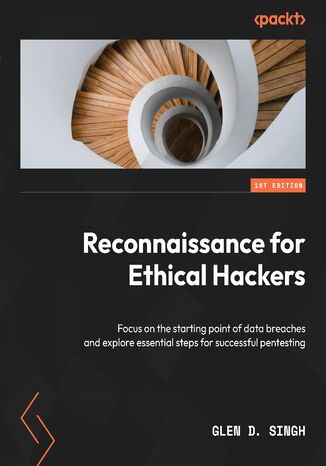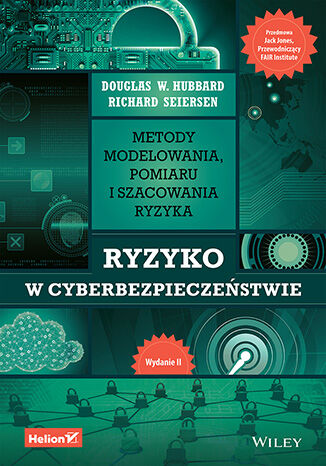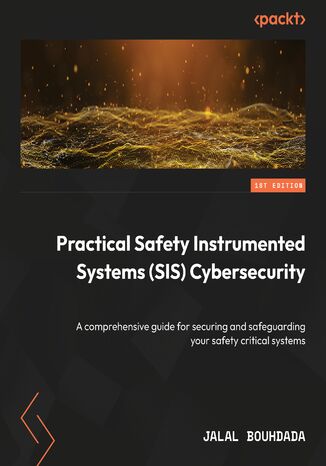Categories
-
- Bitcoin
- Businesswoman
- Coaching
- Controlling
- E-business
- Economy
- Finances
- Stocks and investments
- Personal competence
- Computer in the office
- Communication and negotiation
- Small company
- Marketing
- Motivation
- Multimedia trainings
- Real estate
- Persuasion and NLP
- Taxes
- Social policy
- Guides
- Presentations
- Leadership
- Public Relation
- Reports, analyses
- Secret
- Social Media
- Sales
- Start-up
- Your career
- Management
- Project management
- Human Resources
-
- Architektura i wnętrza
- Health and Safety
- Biznes i Ekonomia
- Home and garden
- E-business
- Ekonomia i finanse
- Esoterecism
- Finances
- Personal finance
- Business
- Photography
- Computer science
- HR & Payroll
- For women
- Computers, Excel
- Accounts
- Culture and literature
- Scientific and academic
- Environmental protection
- Opinion-forming
- Education
- Taxes
- Travelling
- Psychology
- Religion
- Agriculture
- Book and press market
- Transport and Spedition
- Healthand beauty
-
- Office applications
- Data bases
- Bioinformatics
- IT business
- CAD/CAM
- Digital Lifestyle
- DTP
- Electronics
- Digital photography
- Computer graphics
- Games
- Hacking
- Hardware
- IT w ekonomii
- Scientific software package
- School textbooks
- Computer basics
- Programming
- Mobile programming
- Internet servers
- Computer networks
- Start-up
- Operational systems
- Artificial intelligence
- Technology for children
- Webmastering
-
- Antology
- Ballade
- Biographies and autobiographies
- For adults
- Dramas
- Diaries, memoirs, letters
- Epic, epopee
- Essay
- Fantasy and science fiction
- Feuilletons
- Work of fiction
- Humour and satire
- Other
- Classical
- Crime fiction
- Non-fiction
- Fiction
- Mity i legendy
- Nobelists
- Novellas
- Moral
- Okultyzm i magia
- Short stories
- Memoirs
- Travelling
- Narrative poetry
- Poetry
- Politics
- Popular science
- Novel
- Historical novel
- Prose
- Adventure
- Journalism, publicism
- Reportage novels
- Romans i literatura obyczajowa
- Sensational
- Thriller, Horror
- Interviews and memoirs
-
- Archeology
- Bibliotekoznawstwo
- Cinema studies
- Philology
- Polish philology
- Philosophy
- Finanse i bankowość
- Geography
- Economy
- Trade. World economy
- History and archeology
- History of art and architecture
- Cultural studies
- Linguistics
- Literary studies
- Logistics
- Maths
- Medicine
- Humanities
- Pedagogy
- Educational aids
- Popular science
- Other
- Psychology
- Sociology
- Theatre studies
- Theology
- Economic theories and teachings
- Transport i spedycja
- Physical education
- Zarządzanie i marketing
-
- Health and Safety
- History
- Road Code. Driving license
- Law studies
- Healthcare
- General. Compendium of knowledge
- Academic textbooks
- Other
- Construction and local law
- Civil law
- Financial law
- Economic law
- Economic and trade law
- Criminal law
- Criminal law. Criminal offenses. Criminology
- International law
- International law
- Health care law
- Educational law
- Tax law
- Labor and social security law
- Public, constitutional and administrative law
- Family and Guardianship Code
- agricultural law
- Social law, labour law
- European Union law
- Industry
- Agricultural and environmental
- Dictionaries and encyclopedia
- Public procurement
- Management
-
- Africa
- Albums
- Southern America
- North and Central America
- Australia, New Zealand, Oceania
- Austria
- Asia
- Balkans
- Middle East
- Bulgary
- China
- Croatia
- The Czech Republic
- Denmark
- Egipt
- Estonia
- Europe
- France
- Mountains
- Greece
- Spain
- Holand
- Iceland
- Lithuania
- Latvia
- Mapy, Plany miast, Atlasy
- Mini travel guides
- Germany
- Norway
- Active travelling
- Poland
- Portugal
- Other
- Przewodniki po hotelach i restauracjach
- Russia
- Romania
- Slovakia
- Slovenia
- Switzerland
- Sweden
- World
- Turkey
- Ukraine
- Hungary
- Great Britain
- Italy
-
- Philosophy of life
- Kompetencje psychospołeczne
- Interpersonal communication
- Mindfulness
- General
- Persuasion and NLP
- Academic psychology
- Psychology of soul and mind
- Work psychology
- Relacje i związki
- Parenting and children psychology
- Problem solving
- Intellectual growth
- Secret
- Sexapeal
- Seduction
- Appearance and image
- Philosophy of life
-
- Bitcoin
- Businesswoman
- Coaching
- Controlling
- E-business
- Economy
- Finances
- Stocks and investments
- Personal competence
- Communication and negotiation
- Small company
- Marketing
- Motivation
- Real estate
- Persuasion and NLP
- Taxes
- Social policy
- Guides
- Presentations
- Leadership
- Public Relation
- Secret
- Social Media
- Sales
- Start-up
- Your career
- Management
- Project management
- Human Resources
-
- Antology
- Ballade
- Biographies and autobiographies
- For adults
- Dramas
- Diaries, memoirs, letters
- Epic, epopee
- Essay
- Fantasy and science fiction
- Feuilletons
- Work of fiction
- Humour and satire
- Other
- Classical
- Crime fiction
- Non-fiction
- Fiction
- Mity i legendy
- Nobelists
- Novellas
- Moral
- Okultyzm i magia
- Short stories
- Memoirs
- Travelling
- Poetry
- Politics
- Popular science
- Novel
- Historical novel
- Prose
- Adventure
- Journalism, publicism
- Reportage novels
- Romans i literatura obyczajowa
- Sensational
- Thriller, Horror
- Interviews and memoirs
-
- Philosophy of life
- Interpersonal communication
- Mindfulness
- General
- Persuasion and NLP
- Academic psychology
- Psychology of soul and mind
- Work psychology
- Relacje i związki
- Parenting and children psychology
- Problem solving
- Intellectual growth
- Secret
- Sexapeal
- Seduction
- Appearance and image
- Philosophy of life
Network security
Matt Harrison, Theodore Petrou
The pandas library is massive, and it's common for frequent users to be unaware of many of its more impressive features. The official pandas documentation, while thorough, does not contain many useful examples of how to piece together multiple commands as one would do during an actual analysis. This book guides you, as if you were looking over the shoulder of an expert, through situations that you are highly likely to encounter.This new updated and revised edition provides you with unique, idiomatic, and fun recipes for both fundamental and advanced data manipulation tasks with pandas. Some recipes focus on achieving a deeper understanding of basic principles, or comparing and contrasting two similar operations. Other recipes will dive deep into a particular dataset, uncovering new and unexpected insights along the way. Many advanced recipes combine several different features across the pandas library to generate results.
Penetration Testing: A Survival Guide. A Survival Guide
Wolf Halton, Bo Weaver, Juned Ahmed Ansari, Srinivasa Rao Kotipalli, ...
The need for penetration testers has grown well over what the IT industry ever anticipated. Running just a vulnerability scanner is no longer an effective method to determine whether a business is truly secure. This learning path will help you develop the most effective penetration testing skills to protect your Windows, web applications, and Android devices. The first module focuses on the Windows platform, which is one of the most common OSes, and managing its security spawned the discipline of IT security. Kali Linux is the premier platform for testing and maintaining Windows security. Employs the most advanced tools and techniques to reproduce the methods used by sophisticated hackers. In this module first,you’ll be introduced to Kali's top ten tools and other useful reporting tools. Then, you will find your way around your target network and determine known vulnerabilities so you can exploit a system remotely. You’ll not only learn to penetrate in the machine, but will also learn to work with Windows privilege escalations.The second module will help you get to grips with the tools used in Kali Linux 2.0 that relate to web application hacking. You will get to know about scripting and input validation flaws, AJAX, and security issues related to AJAX. You will also use an automated technique called fuzzing so you can identify flaws in a web application. Finally, you’ll understand the web application vulnerabilities and the ways they can be exploited.In the last module, you’ll get started with Android security. Android, being the platform with the largest consumer base, is the obvious primary target for attackers. You’ll begin this journey with the absolute basics and will then slowly gear up to the concepts of Android rooting, application security assessments, malware, infecting APK files, and fuzzing. You’ll gain the skills necessary to perform Android application vulnerability assessments and to create an Android pentesting lab.This Learning Path is a blend of content from the following Packt products:• Kali Linux 2: Windows Penetration Testing by Wolf Halton and Bo Weaver• Web Penetration Testing with Kali Linux, Second Edition by Juned Ahmed Ansari• Hacking Android by Srinivasa Rao Kotipalli and Mohammed A. Imran
Penetration Testing Bootcamp. Quickly get up and running with pentesting techniques
Penetration Testing Bootcamp delivers practical, learning modules in manageable chunks. Each chapter is delivered in a day, and each day builds your competency in Penetration Testing.This book will begin by taking you through the basics and show you how to set up and maintain the C&C Server. You will also understand how to scan for vulnerabilities and Metasploit, learn how to setup connectivity to a C&C server and maintain that connectivity for your intelligence gathering as well as offsite processing. Using TCPDump filters, you will gain understanding of the sniffing and spoofing traffic. This book will also teach you the importance of clearing up the tracks you leave behind after the penetration test and will show you how to build a report from all the data obtained from the penetration test.In totality, this book will equip you with instructions through rigorous tasks, practical callouts, and assignments to reinforce your understanding of penetration testing.
Michael McPhee, Jason Beltrame
This book will show you how to utilize the latest credit card sized Raspberry Pi 3 and create a portable, low-cost hacking tool using Kali Linux 2.You’ll begin by installing and tuning Kali Linux 2 on Raspberry Pi 3 and then get started with penetration testing. You will be exposed to various network security scenarios such as wireless security, scanning network packets in order to detect any issues in the network, and capturing sensitive data. You will also learn how to plan and perform various attacks such as man-in-the-middle, password cracking, bypassing SSL encryption, compromising systems using various toolkits, and many more. Finally, you’ll see how to bypass security defenses and avoid detection, turn your Pi 3 into a honeypot, and develop a command and control system to manage a remotely-placed Raspberry Pi 3.By the end of this book you will be able to turn Raspberry Pi 3 into a hacking arsenal to leverage the most popular open source toolkit, Kali Linux 2.0.
pfSense 2.x Cookbook. Manage and maintain your network using pfSense - Second Edition
pfSense is an open source distribution of the FreeBSD-based firewall that provides a platform for ?exible and powerful routing and firewalling. The versatility of pfSense presents us with a wide array of configuration options, which makes determining requirements a little more difficult and a lot more important compared to other offerings. pfSense 2.x Cookbook – Second Edition starts by providing you with an understanding of how to complete the basic steps needed to render a pfSense firewall operational. It starts by showing you how to set up different forms of NAT entries and firewall rules and use aliases and scheduling in firewall rules. Moving on, you will learn how to implement a captive portal set up in different ways (no authentication, user manager authentication, and RADIUS authentication), as well as NTP and SNMP configuration. You will then learn how to set up a VPN tunnel with pfSense. The book then focuses on setting up traffic shaping with pfSense, using either the built-in traffic shaping wizard, custom ?oating rules, or Snort. Toward the end, you will set up multiple WAN interfaces, load balancing and failover groups, and a CARP failover group. You will also learn how to bridge interfaces, add static routing entries, and use dynamic routing protocols via third-party packages.
G T Gangemi, Rick Lehtinen, Deborah Russell
Zadbaj o bezpieczeństwo swojego komputera Poznaj zagrożenia, na jakie narażony jest komputer Naucz się kontrolować dostęp do komputera Stosuj techniki zapewniające bezpieczeństwo w sieci Czy mój komputer na pewno jest bezpieczny? Wiele osób zadaje sobie to pytanie dopiero w momencie, kiedy system zaczyna zachowywać się w podejrzany sposób. Okazuje się wówczas, że skaner wykrywa dziesiątki, a nawet setki wirusów, programy zaczynają działać nieprawidłowo, a z dysku giną ważne dane. Pół biedy, jeśli jest to tylko domowy komputer z prywatnymi plikami. Dużo gorsze skutki może mieć włamanie do firmowej bazy danych lub przechwycenie poufnej komunikacji. Książka "Podstawy ochrony komputerów" to wszechstronne wprowadzenie do najważniejszych zagadnień dotyczących bezpieczeństwa danych i sprzętu. Czytając ją, poznasz zagrożenia, jakie czyhają na użytkowników komputerów, ale także skuteczne techniki ochrony. Nauczysz się kontrolować dostęp do danych, prowadzić efektywną politykę zabezpieczeń, wykrywać i usuwać wirusy oraz zapobiegać przenikaniu ich do systemu. Dowiesz się, jak zapewnić bezpieczeństwo komputera w sieci oraz jak używać szyfrowania do przesyłania poufnych informacji. Przeczytasz też o najnowszych technikach zabezpieczenia bazującego na danych biometrycznych (wzorze siatkówki czy odciskach palców) oraz ochronie sieci bezprzewodowych. Niebezpieczeństwa grożące użytkownikom komputerów Kontrolowanie dostępu do komputera Walka z wirusami Prowadzenie skutecznej polityki zabezpieczeń Bezpieczne korzystanie z sieci Szyfrowanie poufnych danych Komunikacja bez ryzyka Zabezpieczenia biometryczne Tworzenie bezpiecznych sieci bezprzewodowych Stosuj skuteczne zabezpieczenia i zapewnij maksymalne bezpieczeństwo swojemu komputerowi!
Securing connected industries and autonomous systems is of primary concern to the Industrial Internet of Things (IIoT) community. Unlike cybersecurity, cyber-physical security directly ties to system reliability as well as human and environmental safety.This hands-on guide begins by establishing the foundational concepts of IIoT security with the help of real-world case studies, threat models, and reference architectures. You’ll work with practical tools to design risk-based security controls for industrial use cases and gain practical knowledge of multi-layered defense techniques, including identity and access management (IAM), endpoint security, and communication infrastructure. You’ll also understand how to secure IIoT lifecycle processes, standardization, and governance. In the concluding chapters, you’ll explore the design and implementation of resilient connected systems with emerging technologies such as blockchain, artificial intelligence, and machine learning.By the end of this book, you’ll be equipped with the all the knowledge required to design industry-standard IoT systems confidently.
Davide Bedin, Mark Russinovich
This second edition will help you get to grips with microservice architectures and how to manage application complexities with Dapr in no time. You'll understand how Dapr simplifies development while allowing you to work with multiple languages and platforms. Following a C# sample, you'll understand how Dapr's runtime, building blocks, and software development kits (SDKs) help you to simplify the creation of resilient and portable microservices.Dapr provides an event-driven runtime that supports the essential features you need for building microservices, including service invocation, state management, and publish/subscribe messaging. You'll explore all of those in addition to various other advanced features with this practical guide to learning Dapr. With a focus on deploying the Dapr sample application to an Azure Kubernetes Service cluster and to the Azure Container Apps serverless platform, you’ll see how to expose the Dapr application with NGINX, YARP, and Azure API Management.By the end of this book, you'll be able to write microservices easily by implementing industry best practices to solve problems related to distributed systems.
Rohit Tamma, Oleg Skulkin, Heather Mahalik, Satish Bommisetty
Mobile phone forensics is the science of retrieving data from a mobile phone under forensically sound conditions. This updated fourth edition of Practical Mobile Forensics delves into the concepts of mobile forensics and its importance in today's world.The book focuses on teaching you the latest forensic techniques to investigate mobile devices across various mobile platforms. You will learn forensic techniques for multiple OS versions, including iOS 11 to iOS 13, Android 8 to Android 10, and Windows 10. The book then takes you through the latest open source and commercial mobile forensic tools, enabling you to analyze and retrieve data effectively. From inspecting the device and retrieving data from the cloud, through to successfully documenting reports of your investigations, you'll explore new techniques while building on your practical knowledge. Toward the end, you will understand the reverse engineering of applications and ways to identify malware. Finally, the book guides you through parsing popular third-party applications, including Facebook and WhatsApp.By the end of this book, you will be proficient in various mobile forensic techniques to analyze and extract data from mobile devices with the help of open source solutions.
Network automation is the use of IT controls to supervise and carry out everyday network management functions. It plays a key role in network virtualization technologies and network functions.The book starts by providing an introduction to network automation, and its applications, which include integrating DevOps tools to automate the network efficiently. It then guides you through different network automation tasks and covers various data digging and performing tasks such as ensuring golden state configurations using templates, interface parsing. This book also focuses on Intelligent Operations using Artificial Intelligence and troubleshooting using chatbots and voice commands. The book then moves on to the use of Python and the management of SSH keys for machine-to-machine (M2M) communication, all followed by practical use cases. The book also covers the importance of Ansible for network automation, including best practices in automation; ways to test automated networks using tools such as Puppet, SaltStack, and Chef; and other important techniques.Through practical use-cases and examples, this book will acquaint you with the various aspects of network automation. It will give you the solid foundation you need to automate your own network without any hassle.
Security automation is the automatic handling of software security assessments tasks. This book helps you to build your security automation framework to scan for vulnerabilities without human intervention.This book will teach you to adopt security automation techniques to continuously improve your entire software development and security testing. You will learn to use open source tools and techniques to integrate security testing tools directly into your CI/CD framework. With this book, you will see how to implement security inspection at every layer, such as secure code inspection, fuzz testing, Rest API, privacy, infrastructure security, and web UI testing. With the help of practical examples, this book will teach you to implement the combination of automation and Security in DevOps. You will learn about the integration of security testing results for an overall security status for projects.By the end of this book, you will be confident implementing automation security in all layers of your software development stages and will be able to build your own in-house security automation platform throughout your mobile and cloud releases.
Megan Roddie, Jason Deyalsingh, Gary J. Katz
Threat validation is the backbone of every strong security detection strategy—it ensures your detection pipeline is effective, reliable, and resilient against real-world threats.This comprehensive guide is designed for those new to detection validation, offering clear, actionable frameworks to help you assess, test, and refine your security detections with confidence. Covering the entire detection lifecycle, from development to validation, this book provides real-world examples, hands-on tutorials, and practical projects to solidify your skills.Beyond just technical know-how, this book empowers you to build a career in detection engineering, equipping you with the essential expertise to thrive in today’s cybersecurity landscape.By the end of this book, you'll have the tools and knowledge to fortify your organization’s defenses, enhance detection accuracy, and stay ahead of cyber threats.
Przechwytywanie pakietów i badanie ich zawartości może kojarzyć się z szemraną działalnością domorosłych hakerów i włamywaczy. Okazuje się jednak, że analiza pakietów jest jednym ze skuteczniejszych narzędzi do rozwiązywania problemów z siecią. O ile samo przechwycenie pakietu, na przykład za pomocą popularnego narzędzia Wireshark, zasadniczo nie sprawia problemu, o tyle zbadanie zawartości tego pakietu i wykorzystanie zdobytej wiedzy do poprawy działania sieci bywa sporym wyzwaniem nawet dla doświadczonych administratorów. Niniejsza książka jest niezwykle praktycznym, przystępnie napisanym podręcznikiem, który znakomicie ułatwia zrozumienie tego, co się dzieje w sieci, i podjęcie adekwatnych działań w celu poprawy jej funkcjonowania. Niniejsze, trzecie wydanie książki zostało przejrzane i zaktualizowane, uwzględniono w nim również najnowszą wersję narzędzia Wireshark (2.x). Opisano sposób wykorzystywania przechwyconych danych do rozwiązywania problemów sieci. Gruntownie omówiono protokoły IPv6 i SMTP, znalazł się tu również nowy rozdział opisujący narzędzia tshark i tcpdum. Działają one na poziomie powłoki i służą do analizy pakietów. Najważniejsze zagadnienia ujęte w książce: badanie komunikacji sieciowej w czasie rzeczywistym wykrywanie przyczyn problemów z siecią wyodrębnianie plików z pakietów działanie złośliwego kodu na poziomie pakietów generowanie raportów i statystyk dotyczących ruchu sieciowego Sprawdź, co w pakiecie piszczy! Chris Sanders — jest ekspertem w dziedzinie bezpieczeństwa informacji. Pochodzi z Mayfield w stanie Kentucky. Pracował dla wielu agencji rządowych i wojskowych, a także dla kilku firm z listy Fortune 500. W czasie współpracy z Departamentem Obrony USA Sanders rozwijał modele dostawcy usług sieciowych oraz narzędzia wywiadowcze. Założył fundację, której celem jest rozwój zaawansowanych technologii informatycznych na obszarach wiejskich. W wolnych chwilach ogląda mecze koszykówki, grilluje i spędza czas na plaży. Wraz z żoną Ellen mieszka w Charleston, w stanie Karolina Południowa.
Prawdziwa głębia OSINT. Odkryj wartość danych Open Source Intelligence
OSINT (ang. open source intelligence) polega na pozyskiwaniu danych wywiadowczych z ogólnodostępnych źródeł. Jest to zestaw praktycznych umiejętności, które przydadzą się nie tylko analitykom - metody białego wywiadu okazują się pomocne na wielu ścieżkach kariery, a także w życiu codziennym. Łatwo się przekonasz, że OSINT pozwala uzyskać niezwykle cenne informacje, a przy tym jest satysfakcjonującym i ciekawym zajęciem! Dzięki tej książce nauczysz się gromadzić publicznie dostępne informacje, korzystać z wiedzy o cyklu życia wrażliwych danych i przekształcać je w informacje wywiadowcze przydatne dla zespołów zajmujących się bezpieczeństwem. Opanujesz proces gromadzenia i analizy danych, poznasz również strategie, które należy wdrożyć podczas poszukiwania informacji z publicznie dostępnych źródeł. Ugruntujesz wiedzę na temat bezpieczeństwa operacyjnego i uświadomisz sobie, w jaki sposób niektórzy używają publicznie dostępnych danych do nielegalnych celów. Książkę tę szczególnie docenią inżynierowie społeczni i specjaliści do spraw bezpieczeństwa, a także kadra kierownicza. Najciekawsze zagadnienia: strategie stosowania urządzeń IoT do gromadzenia danych wywiadowczych pozyskiwanie danych przy użyciu publicznie dostępnych informacji transportowych techniki poprawy bezpieczeństwa operacyjnego zagrożenia związane z ogólnodostępnymi danymi metody gromadzenia danych wywiadowczych stosowane przez najlepsze zespoły do spraw bezpieczeństwa Dostrzegaj to, co pozostaje niewidoczne dla innych!
Profesjonalne tworzenie kopii zapasowych i odzyskiwanie danych
Ochrona Twoich danych w epoce terabajtów Na jakich nośnikach tworzyć kopię? Którą strategię tworzenia backupu wybrać? Jak obronić koszty tworzenia kopii bezpieczeństwa? Ból, złość i bezsilność po utracie danych jest nie do opisania. Każdy, kogo spotkało takie nieszczęście, z pewnością to potwierdzi. Strata danych może zachwiać niejedną firmą lub domem. Zgadza się - domem! Pomyśl tylko o utracie cyfrowych zdjęć z pierwszych urodzin Twojej pociechy. Celem tej książki nie jest straszenie, ale dostarczanie sprawdzonych strategii tworzenia kopii danych, istotnych zarówno z punktu widzenia firmy, jak i osoby prywatnej. W trakcie lektury dowiesz się, na jakich nośnikach możesz wykonywać kopie danych, poznasz rodzaje macierzy dysków oraz ich zalety i wady. W kolejnych rozdziałach zostaną Ci przedstawione zaawansowane aplikacje do tworzenia kopii bezpieczeństwa, takie jak Symantec NetBackup/BackupExec i CommVault Simpana, oraz różne strategie ich wykonywania. Nauczysz się tworzyć kopię baz danych (SQL Server, Oracle) oraz serwerów poczty (Exchange, Lotus Notes). Ponadto sprawdzisz, jak zweryfikować poprawność kopii, stworzyć raport z przeprowadzonego backupu oraz odtworzyć wybrane dane. Książka ta skupia się na zabezpieczaniu przed utratą danych w dużych środowiskach firmowych i korporacyjnych, jednak użytkownicy domowi, którym zależy na bezpieczeństwie prywatnych informacji, także znajdą tu wiele cennych wskazówek. Jeśli los zawartości Twoich dysków nie jest Ci obojętny, przeczytaj tę książkę! Oprogramowanie do tworzenia kopii Nośniki danych - taśmy DLT, LTO i inne Dyski twarde i macierze RAID Pamięci dyskowe NAS i SAN Wirtualne nośniki danych Nowe technologie nośników Strategie tworzenia kopii zapasowych Opracowywanie harmonogramów Kopie migawkowe i lustrzane Archiwizacja baz danych oraz serwerów pocztowych Przykładowe, kompletne i zaawansowane środowisko tworzenia kopii Tworzenie kopii zapasowych aplikacji Monitorowanie i raportowanie Obrona kosztów tworzenia kopii zapasowych Bądź pewny, że Twoje dane są bezpieczne!
Prywatność danych w praktyce. Skuteczna ochrona prywatności i bezpieczeństwa danych
Chyba nikogo nie trzeba przekonywać, że ochrona danych i zabezpieczenie prywatności są kwestiami absolutnie kluczowymi w cyfrowym świecie. Na szczęście zdajemy sobie coraz lepiej sprawę, że incydenty naruszeń w dziedzinie bezpieczeństwa danych mogą nas narazić na realne szkody. Z drugiej strony niedopełnienie obowiązków wynikających z RODO okazuje się dla organizacji niezwykle kosztowne, a także naraża na szwank ich wizerunek. Zapewnienie należytej ochrony danych to wymagające wyzwanie. Z tego względu inżynieria prywatności z roku na rok staje się coraz ważniejszą dziedziną. Książka w przystępny sposób przedstawia głęboką perspektywę techniczną wraz z przeglądem najnowszych podejść i architektur technologicznych. Emily F. Gorcenski, główna analityczka danych, Thoughtworks Tę książkę docenią osoby, które w ramach codziennej pracy integrują tematy związane z prywatnością i bezpieczeństwem danych. To przewodnik dla pragmatyków, zapewniający gruntowną wiedzę o współczesnych elementach ochrony danych, takich jak prywatność różnicowa, uczenie federacyjne i obliczenia szyfrowane. Znajdziesz tu przydatne wskazówki, jak również najlepsze, wielokrotnie sprawdzone praktyki integracji przełomowych technologii, pozwalające skutecznie i na wysokim poziomie dbać o prywatność i bezpieczeństwo danych. Najważniejsze zagadnienia: Jak przepisy (RODO i CCPA) mają się do przepływów danych i przypadków ich użycia? Jak właściwie anonimizować dane? Czy szyfrowanie homomorficzne jest właściwym rozwiązaniem? Jak wybierać technologie i metody ochrony prywatności? Jak zapewnić bezpieczeństwo danych w projektach opartych na ich analizie? Jak odpowiednio wdrożyć wewnętrzne zasady ochrony prywatności danych? Wreszcie znalazłem książkę, którą mogę polecać wszystkim unikającym tematu prywatności danych! Vincent Warmerdam, twórca Calm Code, inżynier uczenia maszynowego, Explosion
David Routin, Simon Thoores, Samuel Rossier
With small to large companies focusing on hardening their security systems, the term purple team has gained a lot of traction over the last couple of years. Purple teams represent a group of individuals responsible for securing an organization’s environment using both red team and blue team testing and integration – if you’re ready to join or advance their ranks, then this book is for you. Purple Team Strategies will get you up and running with the exact strategies and techniques used by purple teamers to implement and then maintain a robust environment. You’ll start with planning and prioritizing adversary emulation, and explore concepts around building a purple team infrastructure as well as simulating and defending against the most trendy ATT&CK tactics. You’ll also dive into performing assessments and continuous testing with breach and attack simulations. Once you’ve covered the fundamentals, you'll also learn tips and tricks to improve the overall maturity of your purple teaming capabilities along with measuring success with KPIs and reporting.With the help of real-world use cases and examples, by the end of this book, you'll be able to integrate the best of both sides: red team tactics and blue team security measures.
Python Digital Forensics Cookbook. Effective Python recipes for digital investigations
Technology plays an increasingly large role in our daily lives and shows no sign of stopping. Now, more than ever, it is paramount that an investigator develops programming expertise to deal with increasingly large datasets. By leveraging the Python recipes explored throughout this book, we make the complex simple, quickly extracting relevant information from large datasets. You will explore, develop, and deploy Python code and libraries to provide meaningful results that can be immediately applied to your investigations. Throughout the Python Digital Forensics Cookbook, recipes include topics such as working with forensic evidence containers, parsing mobile and desktop operating system artifacts, extracting embedded metadatafrom documents and executables, and identifying indicators of compromise. Youwill also learn to integrate scripts with Application Program Interfaces (APIs) suchas VirusTotal and PassiveTotal, and tools such as Axiom, Cellebrite, and EnCase. By the end of the book, you will have a sound understanding of Python and how you can use it to process artifacts in your investigations.
Python is an easy-to-learn and cross-platform programming language that has unlimited third-party libraries. Plenty of open source hacking tools are written in Python, which can be easily integrated within your script.This book is packed with step-by-step instructions and working examples to make you a skilled penetration tester. It is divided into clear bite-sized chunks, so you can learn at your own pace and focus on the areas of most interest to you. This book will teach you how to code a reverse shell and build an anonymous shell. You will also learn how to hack passwords and perform a privilege escalation on Windows with practical examples. You will set up your own virtual hacking environment in VirtualBox, which will help you run multiple operating systems for your testing environment.By the end of this book, you will have learned how to code your own scripts and mastered ethical hacking from scratch.
Python Network Programming. Conquer all your networking challenges with the powerful Python language
Abhishek Ratan, Eric Chou, Pradeeban Kathiravelu, Dr. M. O. Faruque Sarker
This Learning Path highlights major aspects of Python network programming such as writing simple networking clients, creating and deploying SDN and NFV systems, and extending your network with Mininet. You’ll also learn how to automate legacy and the latest network devices. As you progress through the chapters, you’ll use Python for DevOps and open source tools to test, secure, and analyze your network. Toward the end, you'll develop client-side applications, such as web API clients, email clients, SSH, and FTP, using socket programming.By the end of this Learning Path, you will have learned how to analyze a network's security vulnerabilities using advanced network packet capture and analysis techniques. This Learning Path includes content from the following Packt products:• Practical Network Automation by Abhishek Ratan • Mastering Python Networking by Eric Chou • Python Network Programming Cookbook, Second Edition by Pradeeban Kathiravelu, Dr. M. O. Faruque Sarker
This book explores reconnaissance techniques – the first step in discovering security vulnerabilities and exposed network infrastructure. It aids ethical hackers in understanding adversaries’ methods of identifying and mapping attack surfaces, such as network entry points, which enables them to exploit the target and steal confidential information.Reconnaissance for Ethical Hackers helps you get a comprehensive understanding of how threat actors are able to successfully leverage the information collected during the reconnaissance phase to scan and enumerate the network, collect information, and pose various security threats. This book helps you stay one step ahead in knowing how adversaries use tactics, techniques, and procedures (TTPs) to successfully gain information about their targets, while you develop a solid foundation on information gathering strategies as a cybersecurity professional. The concluding chapters will assist you in developing the skills and techniques used by real adversaries to identify vulnerable points of entry into an organization and mitigate reconnaissance-based attacks.By the end of this book, you’ll have gained a solid understanding of reconnaissance, as well as learned how to secure yourself and your organization without causing significant disruption.
Red Hat Enterprise Linux 8 Essentials. Learn to install, administer and deploy RHEL 8 systems
Red Hat Enterprise Linux 8 is one of the most secure and dependable operating systems available. For this reason, the ambitious system or network engineer will find a working knowledge of Red Hat Enterprise 8 to be an invaluable advantage in their respective fields. This book, now updated for RHEL 8.1, begins with a history of Red Enterprise Linux and its installation. You will be virtually perform remote system administration tasks with cockpit web interface and write shell scripts to maintain server-based systems without desktop installation. Then, you will set up a firewall system using a secure shell and enable remote access to Gnome desktop environment with virtual network computing (VNC). You’ll share files between the Red Hat Enterprise Linux 8 (RHEL 8) and Windows System using Samba client and NFS. You will also run multiple guest operating systems using virtualization and Linux containers, and host websites using RHEL 8 by installing an Apache web server. Finally, you will create logical disks using logical volume management and implement swap space to maintain the performance of a RHEL 8 system. By the end of this book, you will be armed with the skills and knowledge to install the RHEL 8 operating system and use it expertly.
Ryzyko w cyberbezpieczeństwie. Metody modelowania, pomiaru i szacowania ryzyka. Wydanie II
Douglas W. Hubbard, Richard Seiersen
Lord Kelvin powtarzał, że jeśli nie potrafisz czegoś zmierzyć, to nie znasz tego wystarczająco dobrze. Ta zasada w pełni odnosi się do analizy ryzyka w cyberbezpieczeństwie, a słabość pomiarów prowadzi do podejmowania błędnych decyzji. Ta książka nauczy Cię nowych sposobów myślenia o problemie. Uważam, że jest lekturą obowiązkową dla naszej dziedziny! John "Four" Flynn, CISO Amazon Stores Oto drugie wydanie książki, którą specjaliści CISO uznali za przełomową. Dowiesz się z niej, jak kwantyfikować niepewność i jak za pomocą prostych metod i narzędzi poprawić ocenę ryzyka w nowoczesnych organizacjach. Znalazły się tu nowe techniki modelowania, pomiaru i szacowania, a także mnóstwo praktycznych wskazówek dotyczących wdrażania tych rozwiązań w formie spójnego programu. Nauczysz się też oceniać ryzyko, gdy masz dostęp do niewielu danych. Przekonasz się, że zamiast metod jakościowych dużo lepsze efekty w zarządzaniu ryzykiem cyberbezpieczeństwa osiąga się dzięki kwantyfikacji i zaplanowanym pomiarom. Ta książka umożliwia pewne poruszanie się w złożonym krajobrazie cyberbezpieczeństwa. Jason Chan, były wiceprezes do spraw bezpieczeństwa informacji, Netflix Opisane przez Hubbarda i Seiersena metody są praktyczne. Każdy, kto zajmuje się cyberbezpieczeństwem, powinien je stosować. Nick Shevelyov, były CISO banku Silicon Valley
As modern process facilities become increasingly sophisticated and vulnerable to cyber threats, securing critical infrastructure is more crucial than ever. This book offers an indispensable guide to industrial cybersecurity and Safety Instrumented Systems (SIS), vital for maintaining the safety and reliability of critical systems and protecting your operations, personnel, and assets.Starting with SIS design principles, the book delves into the architecture and protocols of safety networks. It provides hands-on experience identifying vulnerabilities and potential attack vectors, exploring how attackers might target SIS components. You’ll thoroughly analyze Key SIS technologies, threat modeling, and attack techniques targeting SIS controllers and engineer workstations. The book shows you how to secure Instrument Asset Management Systems (IAMS), implement physical security measures, and apply integrated risk management methodologies. It also covers compliance with emerging cybersecurity regulations and industry standards worldwide.By the end of the book, you’ll have gained practical insights into various risk assessment methodologies and a comprehensive understanding of how to effectively protect critical infrastructure.



